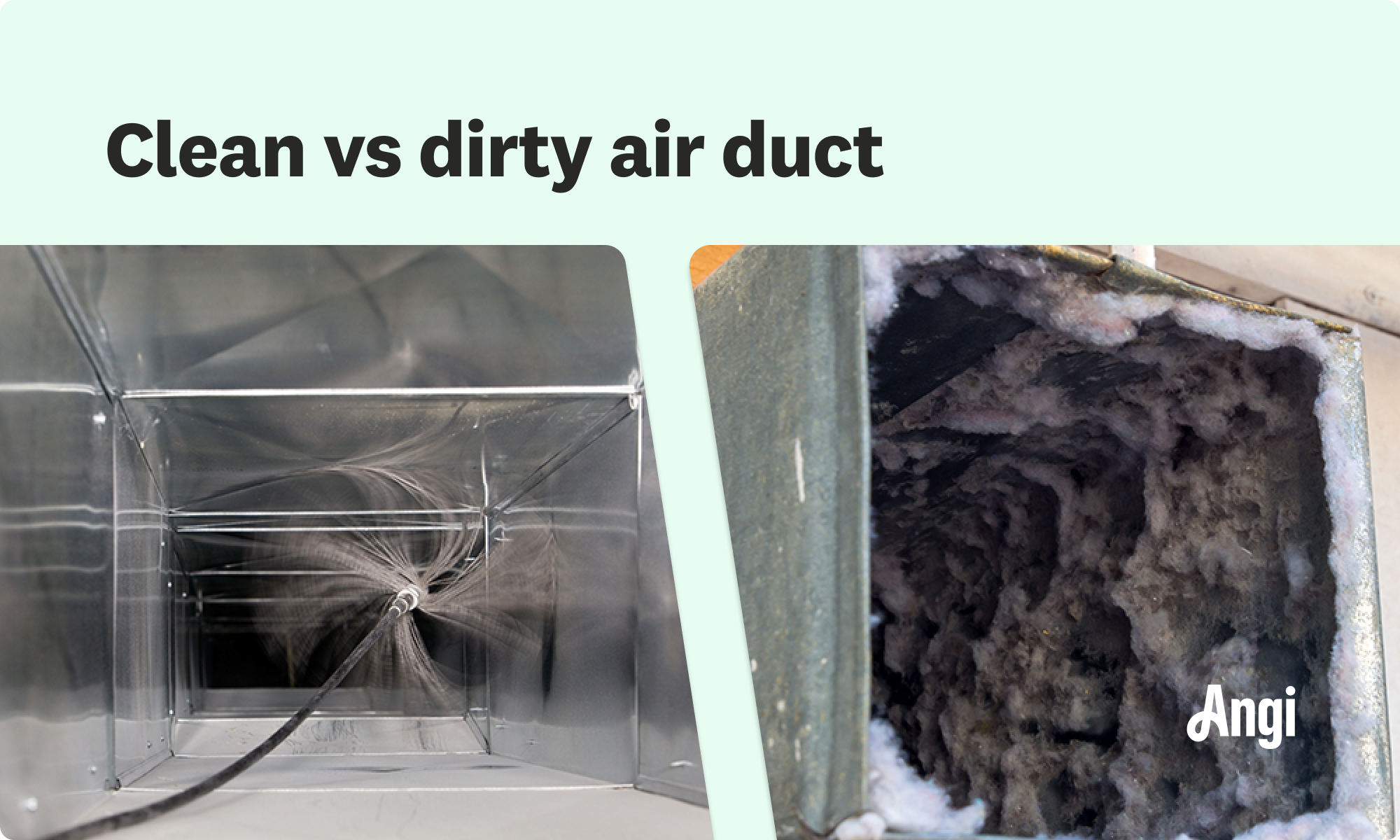
Curious about air duct cleaning costs? Get insights into pricing factors, benefits, and how to tell when it’s time for a good cleaning.
Here’s the down-and-dirty on how ductwork impacts air quality


Dirty air ducts can circulate dust, allergens, and contaminants, potentially leading to health issues.
Common symptoms of dirty duct exposure include an increase in allergies and respiratory issues.
The cost of air duct cleaning ranges from $300 to $500.
Replacing HVAC filters regularly is crucial for maintaining clean air and keeping your system running efficiently.
If you're dealing with constant allergies or respiratory issues without a known cause, you may be wondering if dirty air ducts can make you sick. While your HVAC system is designed to circulate clean air, ductwork that isn’t given its fair share of TLC can become a breeding ground for dust, allergens, mold, and bacteria.
The Environmental Protection Agency says there’s no evidence of dirty ductwork causing severe illness, but they still recommend getting ducts cleaned on an as-needed basis.

When your home’s ductwork sees an excessive buildup of dust, mold, and debris, it can negatively impact your indoor air quality and cause minor health issues. Apart from visually inspecting the ductwork, be on the lookout for these common signs and symptoms:
Increased allergy symptoms, such as sneezing, coughing, or itchy eyes
Worsening asthma or respiratory conditions
Unpleasant musty or stale odors coming from air vents
Excess dust accumulation around vents and throughout the home
Besides preventing dirt, dust, and buildup, there are many benefits of keeping your ductwork clean.
It can improve the air quality in your space by eliminating allergens such as dust, pollen, and pet dander.
You’ll notice an improvement in the overall cleanliness of your home since dirt and dust won’t be constantly circulating and settling on floors, furniture, and other surfaces.
You can squash a vermin infestation.
You can stop mold issues before they become bigger problems.
Air flows more freely, which can boost the efficiency of your HVAC system.
It helps reduce strain on your HVAC system, prolonging its lifespan.
Hiring a professional local air duct cleaner ensures the job gets done thoroughly and safely. These experts use specialized equipment to remove deep-seated dust, allergens, and debris while preventing damage to ductwork or your HVAC system. They can also identify potential issues, such as mold growth or leaks, that might go unnoticed otherwise.
Another hiring option is a professional HVAC technician. These pros have deep knowledge of HVAC systems and can also perform a general inspection to spot other potential issues. However, they may not have the same level of task-specific skills as a specialist focused only on air duct cleaning.
Sudden musty odors and increasing respiratory issues could be signs of mold in your air ducts. Check your vent covers and drip pans for mold. If you see any, call in a mold remediation specialist ASAP.

The average cost of air duct cleaning is $400, but it can range anywhere from $150 to $800 depending on the number of vents and your home’s square footage.
You can also schedule a regular HVAC inspection from a professional HVAC technician for $100 to $300. As a bonus, they’ll be able to diagnose other issues and take care of any other services you might need to maintain your HVAC system.
From average costs to expert advice, get all the answers you need to get your job done.

Curious about air duct cleaning costs? Get insights into pricing factors, benefits, and how to tell when it’s time for a good cleaning.

Whole-house air purifier costs depend on a variety of factors, including your home’s size and layout. The type of purifier you choose matters, too.

Properly maintained air ducts are essential to keep up the air quality of a home. However, it can be tough to know when to professionally clean an air duct, when to repair it, and when to chuck it and buy a new one.

Notice debris coming out of air vents in your home? Explore common causes of debris in air vents and what you can do to keep the vents clean.

Perhaps you want to clean your ductwork but aren't sure when is the best time to clean air ducts. We'll explain everything to help you get on the right schedule.
A shedding pet can worsen your allergies, especially if dander gets in the ductwork. Here’s what to do about pet dander in air ducts for healthier air in your home.